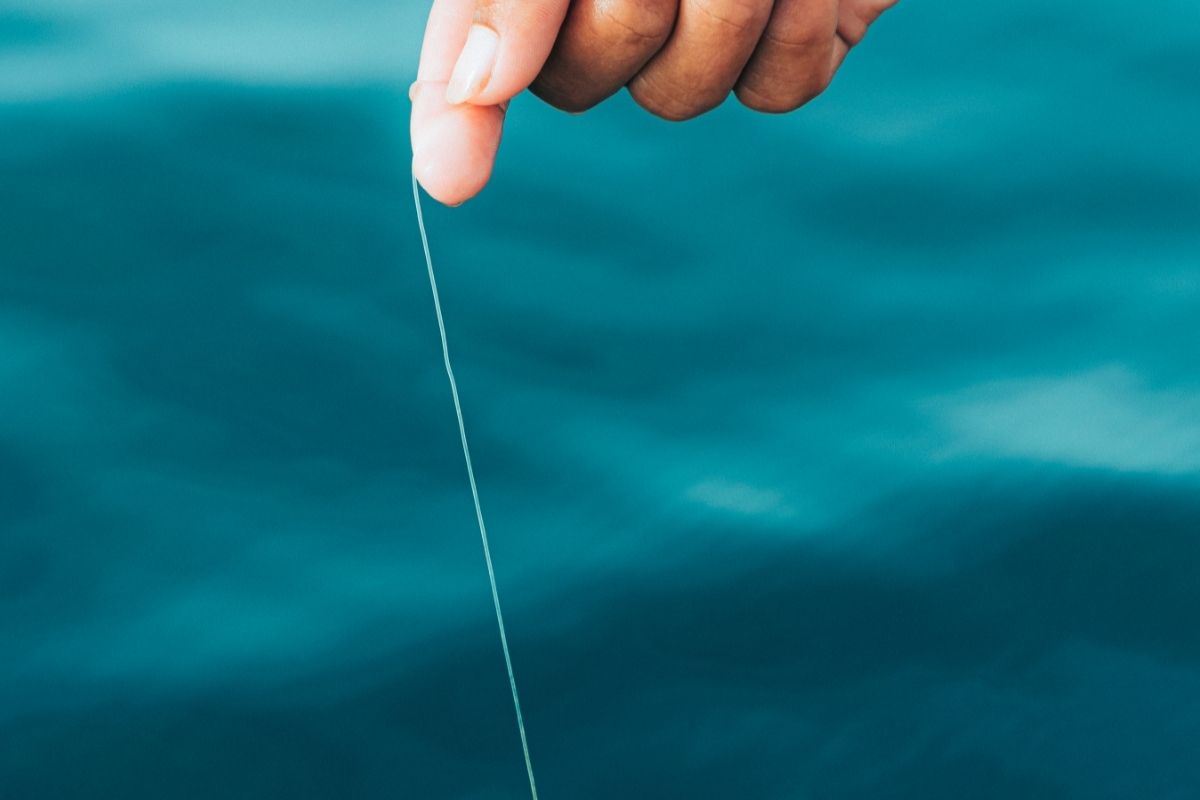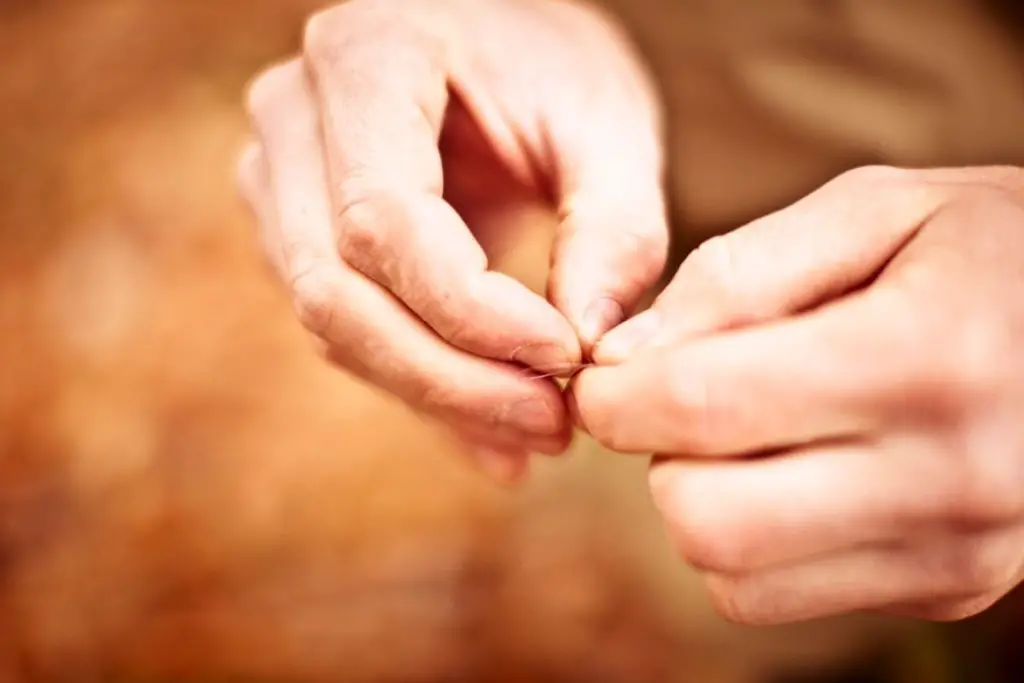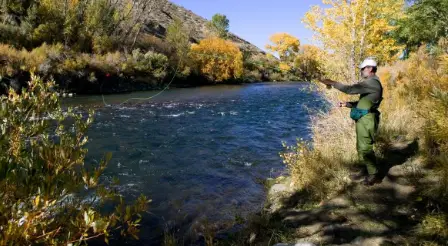Your fishing leader is a great way to catch large, strong fish which is crucial for bait fishing. The line is only a short strand that would go between your main fishing line and the hook or lure that you are using.
It also helps when fishing to have a thin main line without being concerned that it might snap when a large fish starts thrashing around.
If you want to use a leader, then it is important to know how to tie one onto your main fishing line. Thankfully, it is quite simple and you will not have to bring a lot of equipment with you either.
This is an essential skill to learn that you could be using every time you go bait fishing. You may even end up passing the skill onto a friend or the next generation of anglers.
In this guide, we will look out how to tie a leader line and the knots you should use.
Your Leader Length
Steps
The first step to tying your leader line is making sure that is the correct length. When using an artificial lure, you only need a leader length of around 24 inches, which is 61 centimeters.
The shorter length can be used with an artificial lure as the knot is not required to go through the rod guides.
Also, when you repeatedly cast out, the friction can weaken the knot if it rubs against the rod guide.
If you have a live bait then you should opt for a longer leader length of between 30 and 48 inches (76 to 122 centimeters).
This is because of the less friction you are likely to encounter from repeated casting. Until your bait has been used you do not need to reel it to reapply a bait and then cast out again.
You may want to have an even shorter leader length should the line be frayed. This can occasionally happen either if a fish has somehow frayed the line or you simply want to switch the lures around.
You can use a short leader length of only 16 inches (41 centimeters) if the water is not clear enough to see the lure. A shorter leader length is also easier to cast if the conditions are windy.
How to Tie a Steel Leader To Fishing Line -Methods
Steps
Once you have established the length of your leader line you can tie it up with your main fishing line. The easiest way to do this is likely by tying an overhand knot to connect the two lines but do not tighten it up just yet.
Just open up a loop and insert the working end of your leader line through it with your thumb. The loop should remain wide enough to allow the end of the main fishing line to come back through.
You require about 20 centimeters of the main fishing line to come through that overhand knot.

Tyger Leader is reader-supported and may earn a commission when you book or purchase using our links. Learn more about our affiliate disclaimer here.
This should create a loop that connects the leader line to your main fishing line and once the loop is close to the overhand knot you should pinch it with your forefinger and thumb.
Grab the loose end of the main fishing line and wrap it around the leader about six times then put that loose end through the loop.
Now you are ready to tighten so pull the main fishing line that is behind the overhand knot gently which should secure the connection.
The two coils should fall in line next to each other in position so you can pull the main fishing line again to tighten it up, along with the overhand knot on the leader line too.
If you want an even tighter fit, introduce some saliva before you pull the knot tight.
You should see a neat knot that has those two coils sitting next to each other which should ensure that your leader line is securely attached to your main fishing line.
Securing The Lure/Hook To The Leader Line
Process
Now that you have successfully tied your leader line to your main line you may think that your work is over. If you do want to catch some fish then you will need to attach a lure or hook onto your leader line.
You only need to tie a loop knot so as not to constrain your lure or hook and you can use another familiar knot.
That’s right, create an overhand knot with your leader line then leave about four inches (ten centimeters) of that leader line to the side as this will go into your lure or hook.
Grab the leader line and thread it onto your lure or gook then bring that line through the loop you made with the overhand knot.
Gently pull the leader line and the knot should touch the top of the lure or hook. With the short end of the leader line, wrap that around the longer end of the line about four times.
Just like before, tidy up the knot by bringing whatever is left of the short end of the line and thread it through the loop that is above the lure then pull it tightly to secure.
The loop knot is crucial as it gives some leeway for the bait while remaining securely attached so your fish can struggle yet the line should be intact.
If you do have similar breaking strengths between your leader line and main fishing line then you may want to try a different knot; a snug knot.
This one has an increased breaking strength as the friction it generates goes along the surface area of the hook’s eye.
Grab your leader line and thread it through the hook’s eye or lure then twist it behind itself to have a loop. With the short end of the leader line, push that through the loop then pinch the shorter end of the line to create your second loop.
Together, those two loops should look like the infinity sign or a figure of eight. With the leader line, thread that through the second loop twice, effectively wrapping the line around itself. Pull it tight until the loops have vanished and the knot sits comfortably above the hook.
Final Thoughts
Learning about what knots to use and why is a crucial aspect of fishing. Simply being versatile enough to want to use different lures, hooks, or even just to use a leader line can change your fortunes when it comes to fishing.
Try to understand the breaking strengths of your lines too as, with just a simple knot, you can ensure that however hard the fish struggles, your lines will stay intact.



